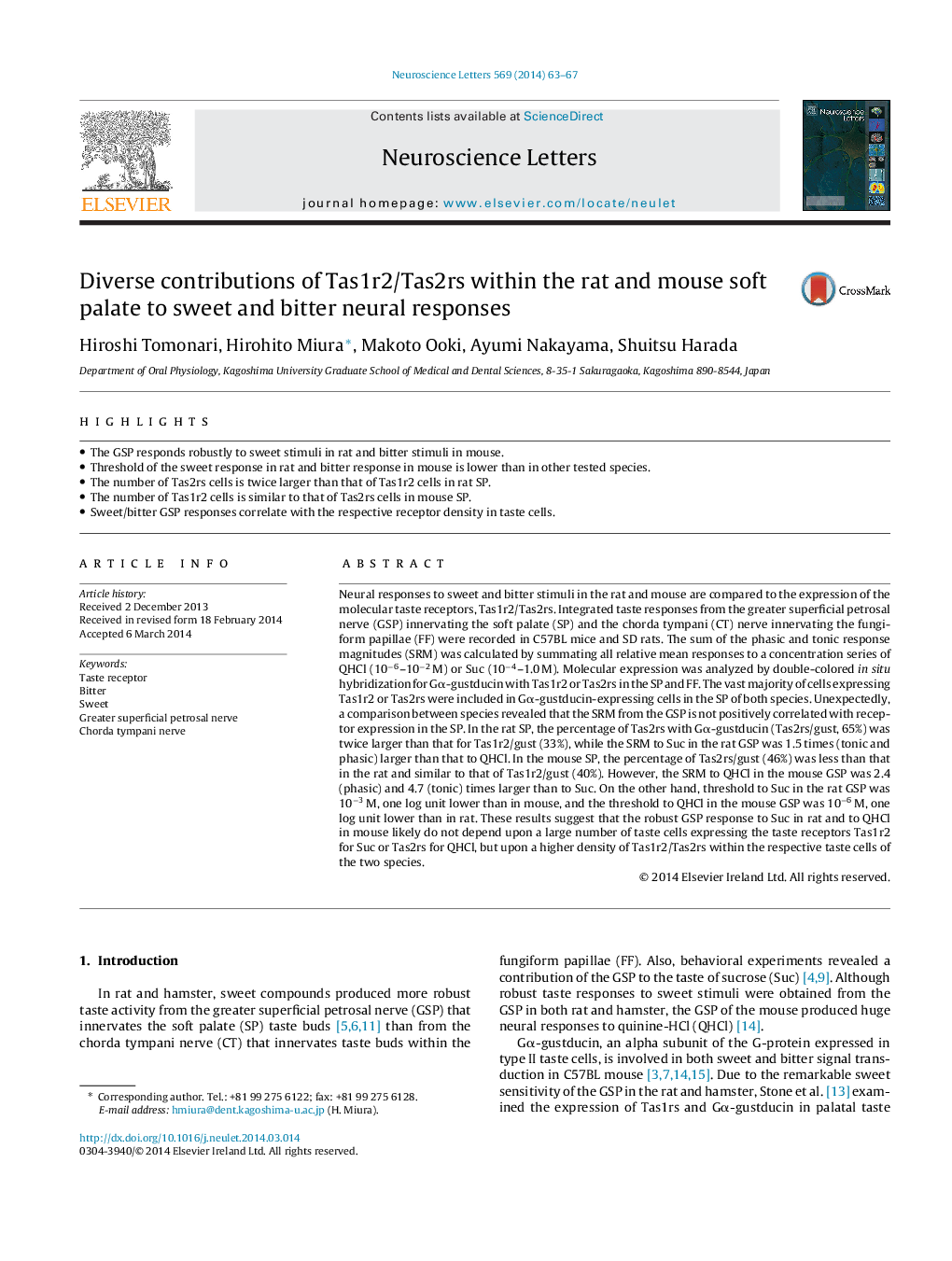| کد مقاله | کد نشریه | سال انتشار | مقاله انگلیسی | نسخه تمام متن |
|---|---|---|---|---|
| 6282000 | 1615130 | 2014 | 5 صفحه PDF | دانلود رایگان |

- The GSP responds robustly to sweet stimuli in rat and bitter stimuli in mouse.
- Threshold of the sweet response in rat and bitter response in mouse is lower than in other tested species.
- The number of Tas2rs cells is twice larger than that of Tas1r2 cells in rat SP.
- The number of Tas1r2 cells is similar to that of Tas2rs cells in mouse SP.
- Sweet/bitter GSP responses correlate with the respective receptor density in taste cells.
Neural responses to sweet and bitter stimuli in the rat and mouse are compared to the expression of the molecular taste receptors, Tas1r2/Tas2rs. Integrated taste responses from the greater superficial petrosal nerve (GSP) innervating the soft palate (SP) and the chorda tympani (CT) nerve innervating the fungiform papillae (FF) were recorded in C57BL mice and SD rats. The sum of the phasic and tonic response magnitudes (SRM) was calculated by summating all relative mean responses to a concentration series of QHCl (10â6-10â2 M) or Suc (10â4-1.0 M). Molecular expression was analyzed by double-colored in situ hybridization for Gα-gustducin with Tas1r2 or Tas2rs in the SP and FF. The vast majority of cells expressing Tas1r2 or Tas2rs were included in Gα-gustducin-expressing cells in the SP of both species. Unexpectedly, a comparison between species revealed that the SRM from the GSP is not positively correlated with receptor expression in the SP. In the rat SP, the percentage of Tas2rs with Gα-gustducin (Tas2rs/gust, 65%) was twice larger than that for Tas1r2/gust (33%), while the SRM to Suc in the rat GSP was 1.5 times (tonic and phasic) larger than that to QHCl. In the mouse SP, the percentage of Tas2rs/gust (46%) was less than that in the rat and similar to that of Tas1r2/gust (40%). However, the SRM to QHCl in the mouse GSP was 2.4 (phasic) and 4.7 (tonic) times larger than to Suc. On the other hand, threshold to Suc in the rat GSP was 10â3 M, one log unit lower than in mouse, and the threshold to QHCl in the mouse GSP was 10â6 M, one log unit lower than in rat. These results suggest that the robust GSP response to Suc in rat and to QHCl in mouse likely do not depend upon a large number of taste cells expressing the taste receptors Tas1r2 for Suc or Tas2rs for QHCl, but upon a higher density of Tas1r2/Tas2rs within the respective taste cells of the two species.
Journal: Neuroscience Letters - Volume 569, 21 May 2014, Pages 63-67